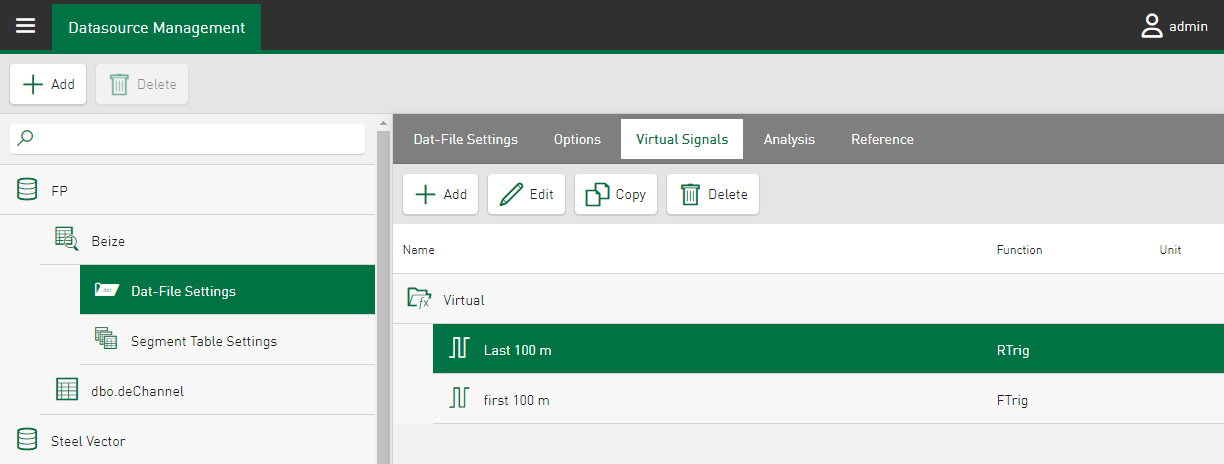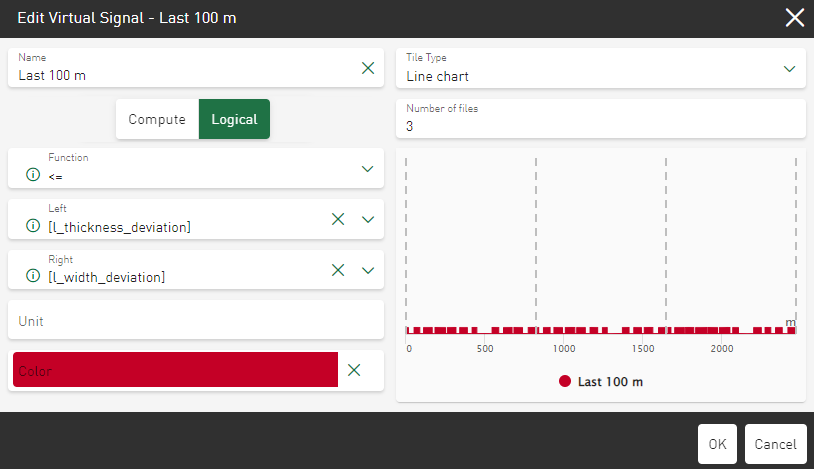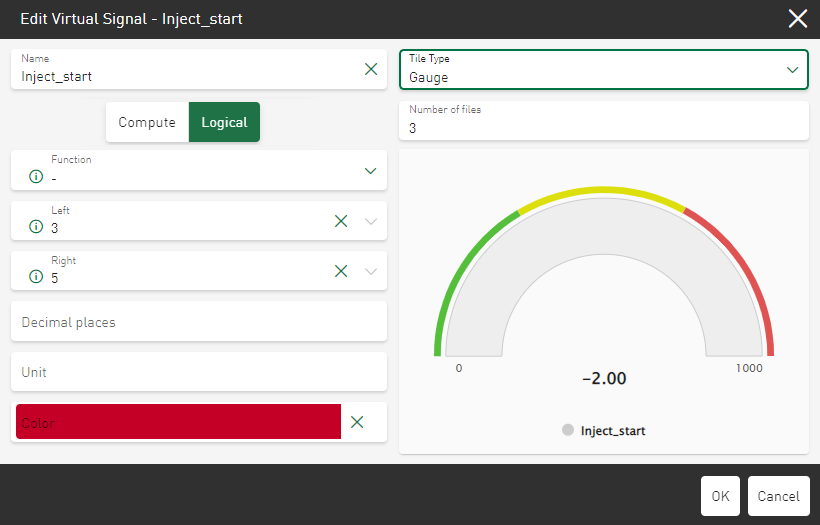In the Datasource Management, you can add and edit virtual signals from different datasources to display comparison values for database tables, DAT files and HD stores. Virtual functions that have already been configured are displayed in tabular form. The currently selected and edited function is always highlighted in green.
-
In Datasource Management, open the Virtual Signals tab in the datasource settings.
-
To add a new virtual signal, tap <Add>, to edit an existing virtual signal, tap <Edit> accordingly.
A dialog window opens, which is divided into a configuration area and a preview area.
-
In the configuration area, define a name, the function, signal parameters and input values for each virtual signal.
For more information on the possible functions, see Virtual signals overview.
In the preview area, the currently determined result for the virtual signal is displayed in accordance with the current datasource and the selected functions. The virtual signal is displayed in a line chart as a default view.
-
To change the Tile Type for the display, select it from the drop-down list.
Only the tile types that are compatible with the function are available for selection.
-
Optionally assign a Unit to the virtual signal.
The default setting of the unit is useful to apply the automatic axis settings in dashboard tiles and to quickly create useful visualizations.
-
Optionally assign a standard color to the virtual signal.
This default color is used in all charts in which this signal is shown.
-
Confirm your entries with <OK>.
The virtual signal is visible under the selected name in the signal tree of the dashboard tiles and can be used for display or for scaling tasks.
Notes on input and parameter values
The number of input and parameter input fields displayed in the dialog changes according to the selected function group. In the respective input fields, you can access the signal tree of the stored datasource via a drop-down menu. Tap on a name in the signal tree and select a specific value for the respective parameter field of the virtual signal. Depending on the selection, several values can also be selected.
You can filter the signal list available for selection by simply entering text in the input field. You can also enter numerical values directly in parameter input fields.



